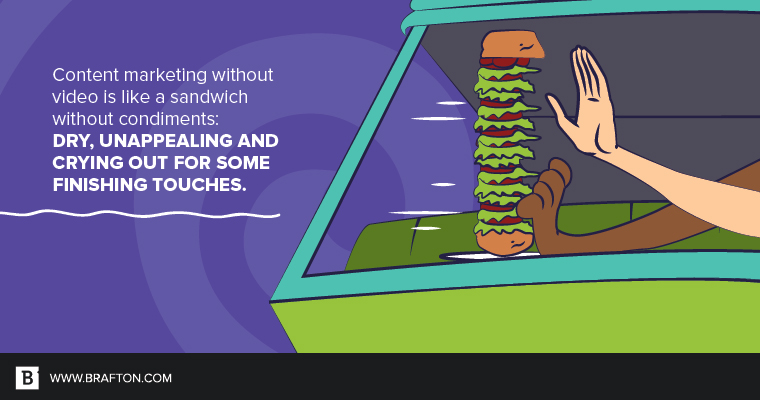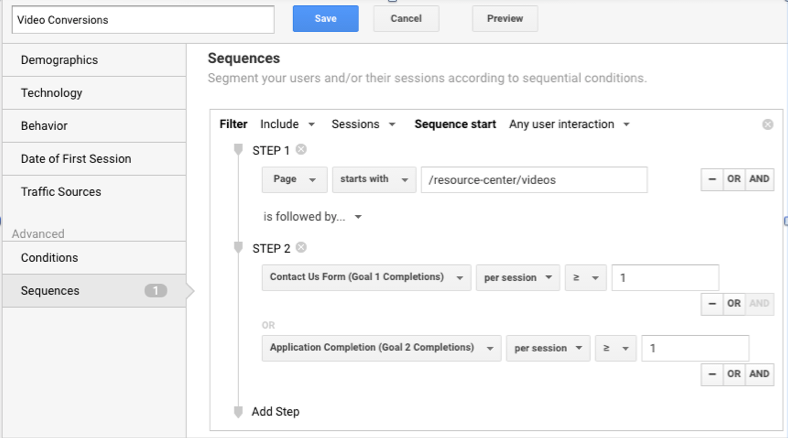A modern content marketing strategy without video is like a sandwich without condiments: dry, unappealing and crying out for some finishing touches (I’m a Dijon and Miracle Whip man myself – go ahead, call me a commie).
Yes, there was a time when video content wasn’t a necessary component of successful marketing strategies. There was also a time when MTV played actual music videos instead of reality shows about pregnant teenagers. Both of those times are long gone.
Just ask the majority of business-to-business and business-to-consumer marketers who invest in pre-produced video marketing. Or bend the ear of the marketing professionals using video who report year-over-year revenue growth that increases nearly twice as fast compared to their competitors.
The return on investment associated with video marketing is undeniable. The question on the tips of most marketing tongues is: Which type of video provides the highest return?
Well, I’m glad you asked. It’s time to fight against your natural instincts and focus on the raw data.

Hard numbers are your friend
First things first. You can’t determine ROI if you’re unsure what form returns will take. What are you measuring? For most marketers, the answer is probably tied to cold, hard cash. You’re looking for sales, leads or some other type of tangible conversion – anything you can assign a dollar value to.
Once you have your metrics in mind, it’s time to figure out what will resonate best with your target audience. Many marketers assume they should start out with an “about us” video touting their company, or an explainer video breaking down their product or service. It’s easy to see why.
Ninety-one percent of consumers report watching explainer videos to learn more about a business’s offerings. Seventy-nine percent said they would rather watch a video to learn about products and services than read website text. However, that doesn’t mean throwing together an animated product demonstration is going to send your sales numbers shooting through the roof.
As Brafton Director of Digital Marketing Strategy Jeff Baker pointed out previously, you must let hard numbers be your guide. Pore over your Google Analytics and find out which blog posts have been most successful with website visitors. Once you determine the magnum opus that seems to draw in readers, map out how you can turn it into a video.
Eighty-four percent of consumers report being convinced to make a purchase after watching a brand’s video. Chances are these individuals were clicking on something that interested them.
“84 percent of consumers report being convinced to make a purchase after watching a brand’s video.”
However, as every marketer knows, it can sometimes seem impossible to draw a straight line from one piece of content to a direct sale. Content marketing strategies feature multiple moving parts, all working in concert to help push consumers down the sales funnel. Videos are only one piece of the puzzle. And while videos based on your most high-performing blog posts are a great place to start, consider the less tangible ROI different types of video content may provide.
Brand awareness and customer trust are essential to long-term business success, and different forms of video marketing can help you boost your performance in these areas. Want to get the word out about your company? Event coverage and high-volume, low-cost options such as video blogs are the way to go. Looking to convince a potential customer they can trust you? Testimonials from satisfied customers and in-depth thought leadership interviews with company executives will do the trick.
And, yes, that animated explainer video you’ve been so eager to produce may just be the cherry on top that convinces a consumer to choose your company over another. Just keep in mind your audience’s wants and needs, as detailed by concrete data, should be your ultimate guiding force.
No two audiences are the same
Not to sound too much like a serial killer, but consumers are moving targets. Sure, there are some general consumer behaviors you can count on when crafting your content marketing strategy, but every brand’s target audience will be different. Again, this is where data analytics will become invaluable in terms of revealing what does and doesn’t work for your prospective customers.
Understanding your audience is key to enhancing video marketing ROI. For instance, as highlighted by Brafton Senior Creative Director Perry Leenhouts, B2B and B2C audiences respond strongly to different types of video content.
“The approach is different,” he said. “B2B buying decisions are based more on relationships and trust. Case studies and thought leadership pieces do well here. B2C audiences are more product driven, and the buying decision is more emotionally based. Product-focused lifestyle videos with a direct-response element perform better.”
Avoid sweeping generalizations, but remember who you’re talking to. The pain points of an employee tasked with purchasing software on behalf of a company will be far different from some dude shopping online in his underwear at home. Create your video content accordingly.
Success should be measured
Ready to see what’s working? Take a dive into Google Analytics. Make sure your website’s event tracking is implemented for when visitors click play on a video. From there you can analyze how many plays a specific clip is getting, as well as whether anyone is sticking around long enough to watch the entire thing.

Next, create specific segments in GA to keep track of various conversion sequences. You should know how many people clicked on your video and then made a purchase. However, you also need to account for the people who may have clicked on your video, checked out some other content, then converted in some other way (I told you that straight line to sales was tricky).
Once you determine how much credit your video content should receive for a conversion, as well as assign each type of conversion a specific dollar value, you can add up money spent versus money made.
Not all ROI is objective. Some benefits from video marketing are intangible. However, if your analytics are showing low click counts and high bounce rates, it may be time to go back to the drawing board. This particular sandwich may need more than just mustard and mayo.





